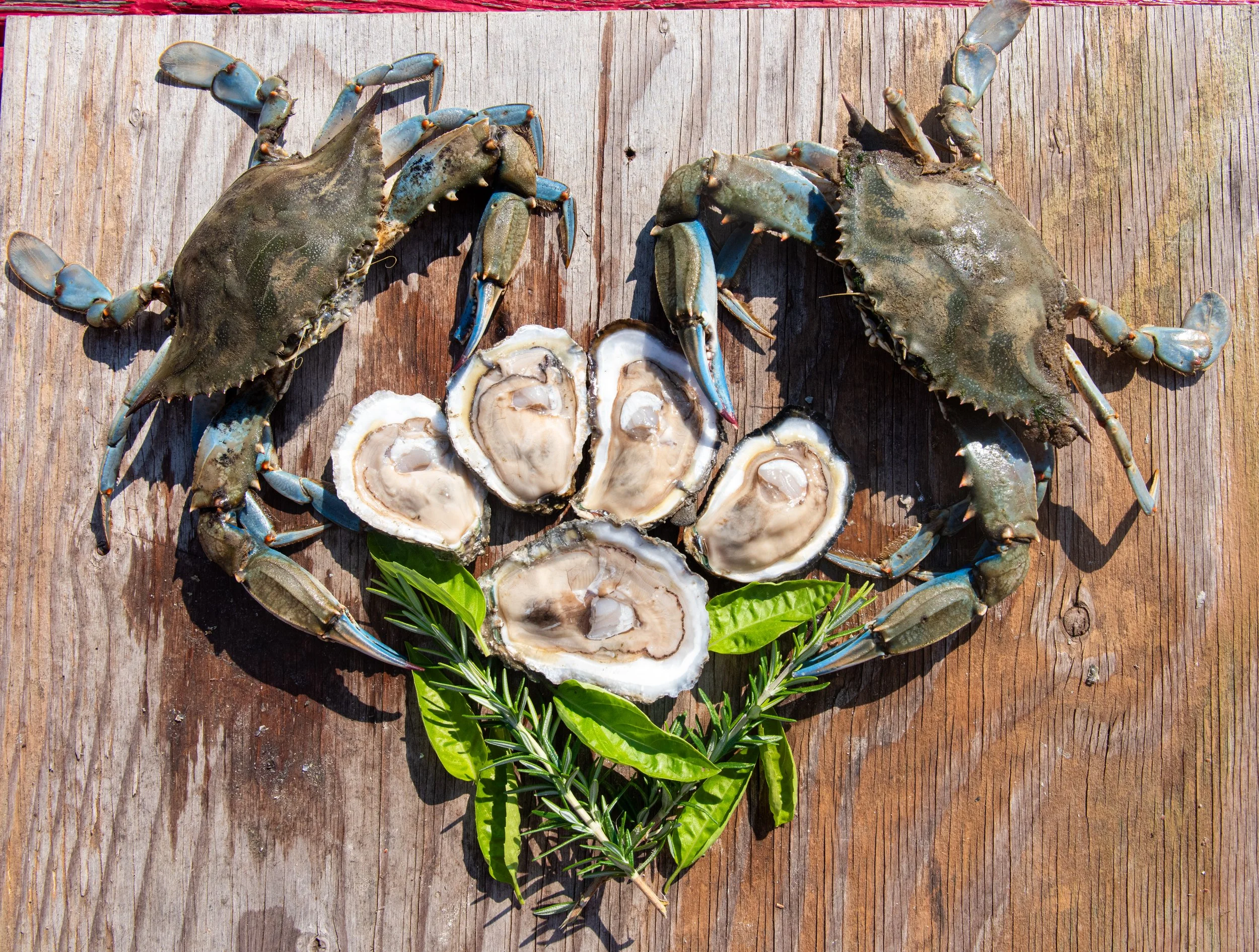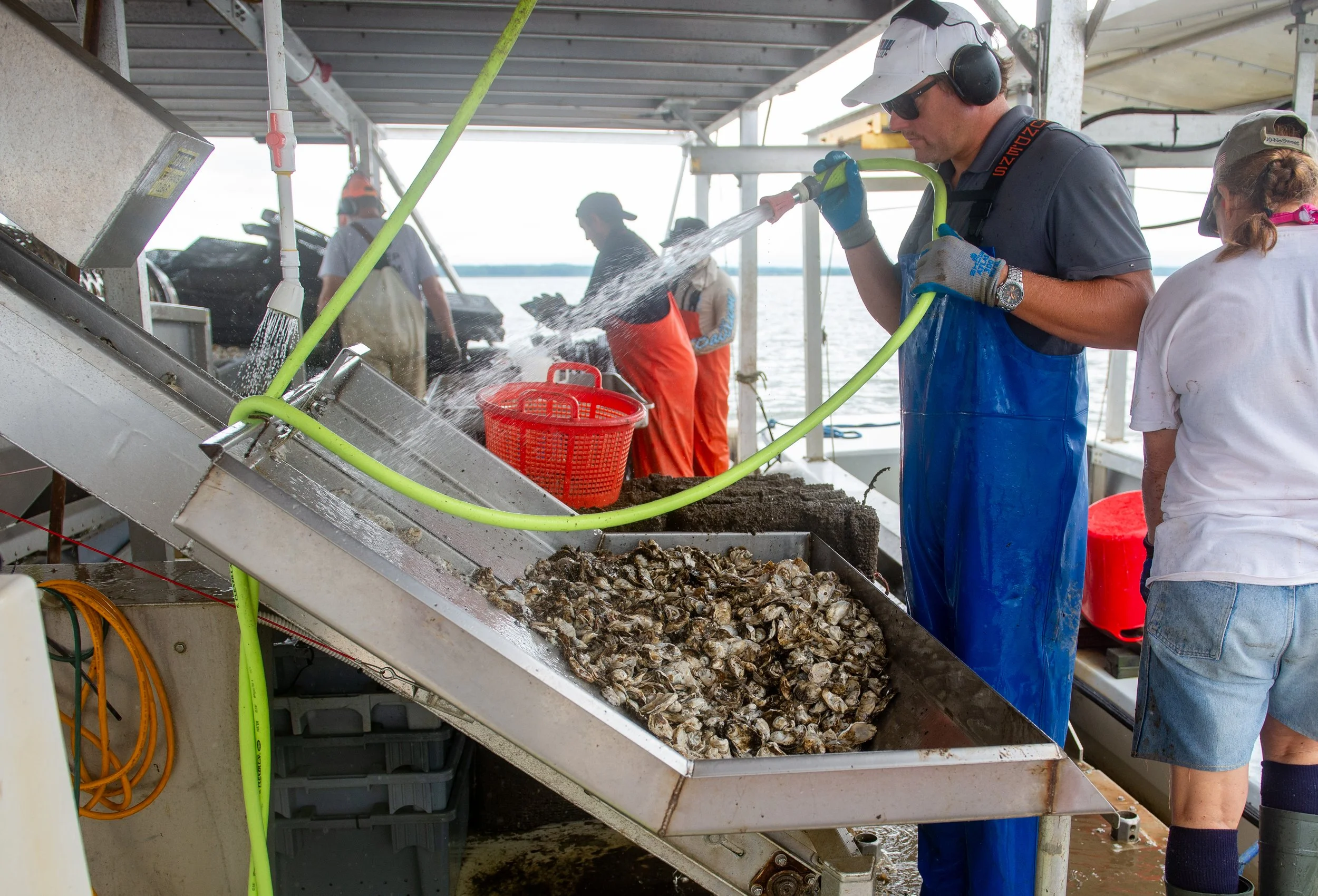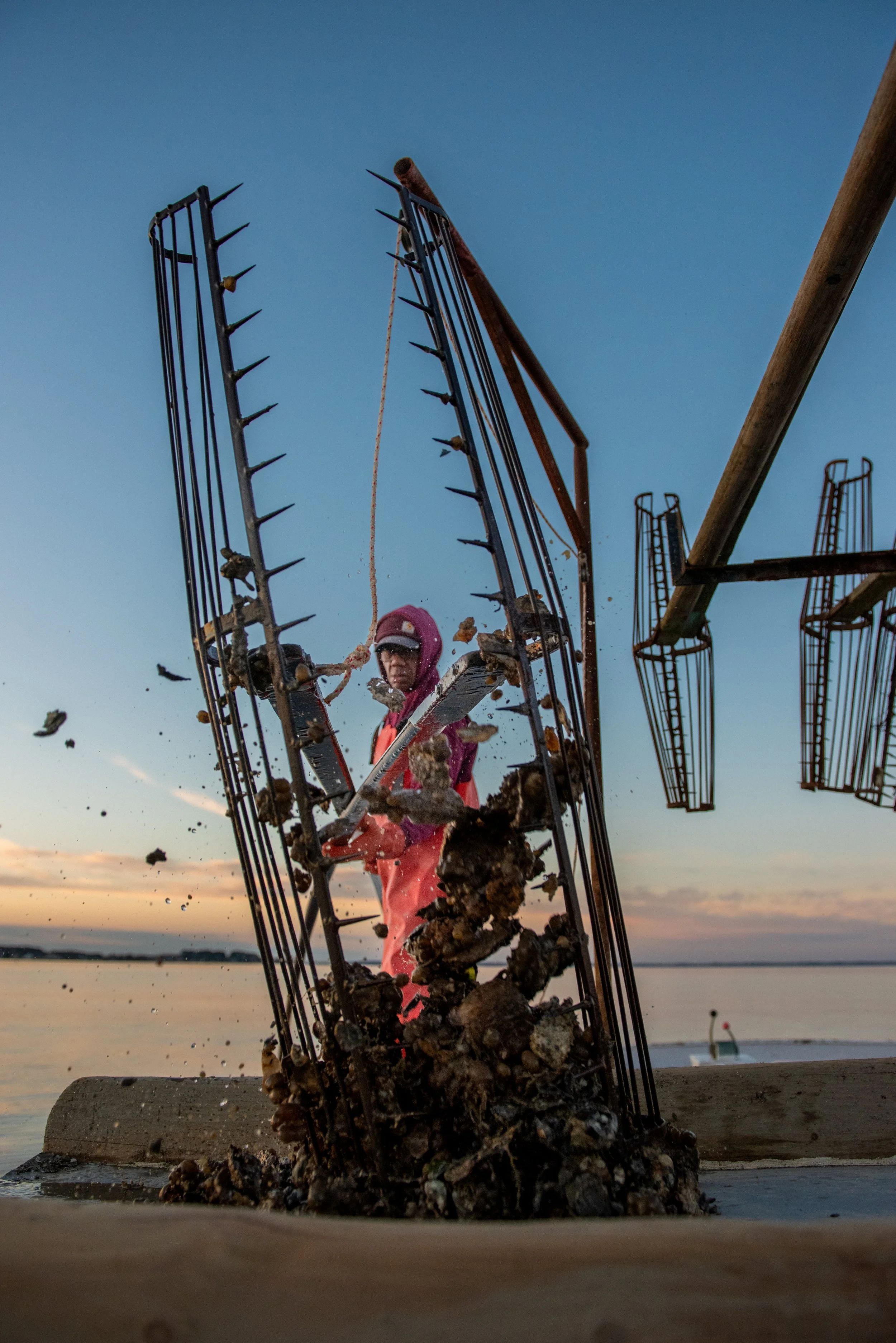
Oysters
Oysters are arguably the most important creature in the Chesapeake Bay. They are filter feeders meaning they filter the water to grow. Over the course of a single day, one oyster can filter 50 gallons of water.
Oysters filter the bay by taking in pollutants like nitrogen and phosphorus, the things that make the water murky. By removing these from the water, oysters are creating cleaner, clearer water.
Aside from the obvious bonus of water filtration, oysters provide a perfect natural habitat. Oysters grow in clusters on reefs, which is basically just a pile of oysters on the bottom. These reefs provide a home and protected area for everything from coral to rockfish. Any angler can tell you that some of the best fishing spots are near known oyster reefs!
In 2008, DNR established the “Marylanders Grow Oysters” program. This program provides oysters to members of the community to keep under docks in cages over the winter. It allows community involvement and informs the public about the importance of oysters in our ecosystem. Involvement and education are crucial to creating a community that cares about the environmental well being of the Chesapeake.
The program also creates a protected environment in which oysters can grow. It’s not just people who find oysters to be a tasty snack. Crabs, fish, and bacteria also love an oyster snack. When spat (baby oysters) are protected in cages in shallow waters during this vulnerable development period, they are significantly more likely to survive.
The program continues to grow each year adding more oysters to our waterways. I have been oyster gardening since I was 6 and I currently tend to 45 Oyster cages on 4 different rivers and on 22 different docks.
Wild Caught Oysters vs. Aquaculture Oysters
Aquaculture farms use a genetically modified oyster, called a Triploid, that does not reproduce but grows very fast. These farms have become a very sustainable way to harvest oysters. Instead of removing the mature oysters from the bay, farms are adding oysters that will be harvested at a later date. (net gain in oysters)
Aquaculture is a newer way of oyster harvest that entails growing oysters from a “seed” rather than harvesting from natural, preexisting oyster reefs.
Because they are growing the oysters from scratch rather than taking from the bottom, they are adding oysters to the water to provide habitat and filter water.
The day of an Oyster Farmer is no easy task. Lifting cages, moving oysters, and equipment makes for long tough days.
However with a little cultivation, the oysters grow to be a perfect shape, size, and taste.
Oyster farms along the coast grow some delicious oysters and it’s all benefiting the Chesapeake’s water quality. Be sure to support your local Oyster Farm fext time you are looking for oysters!
Dawson Hunter from Orchard Point Oyster Farm cleans Oysters on the oyster barge on the Chester River
Wild Caught oysters are caught by watermen on natural oyster reefs.
The career of a waterman is an incredibly difficult one for several reasons. The market for Chesapeake seafood grows smaller and the prices of bait, gas, and (especially) boats become more expensive and the work is tedious and time consuming.
The Oyster industry has a few different harvest methods.
Hand Tonging, Patent Tonging, and Dredging are the most popular and all have their pros and cons.
More historic methods like Dredging with a Skipjack are very rare, only a handful of Skipjacks exist and even fewer work the water Commercially.
Bobby Washington tongs up a lick of oysters off a Wild Oyster Bar on the Tred Avon River.





